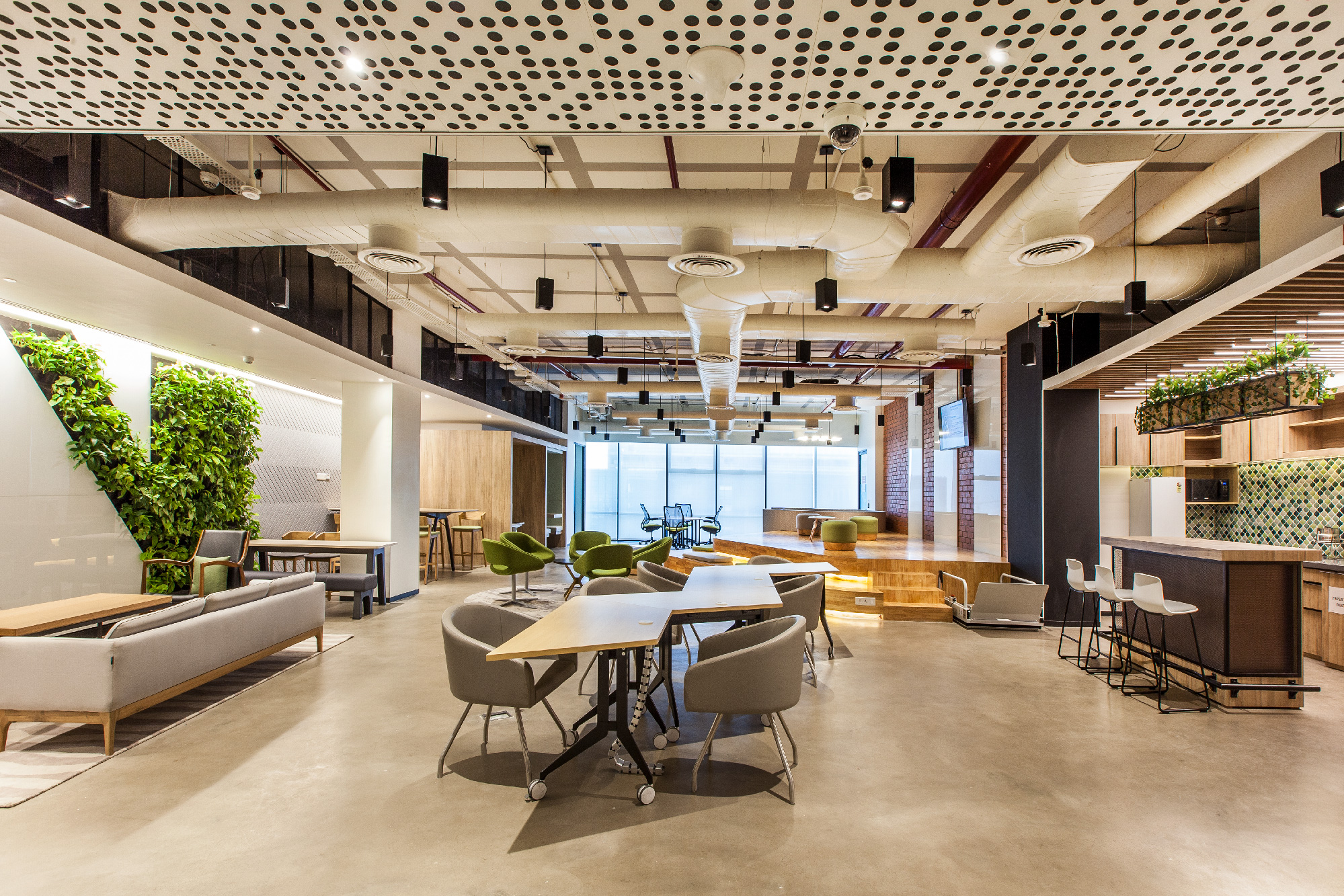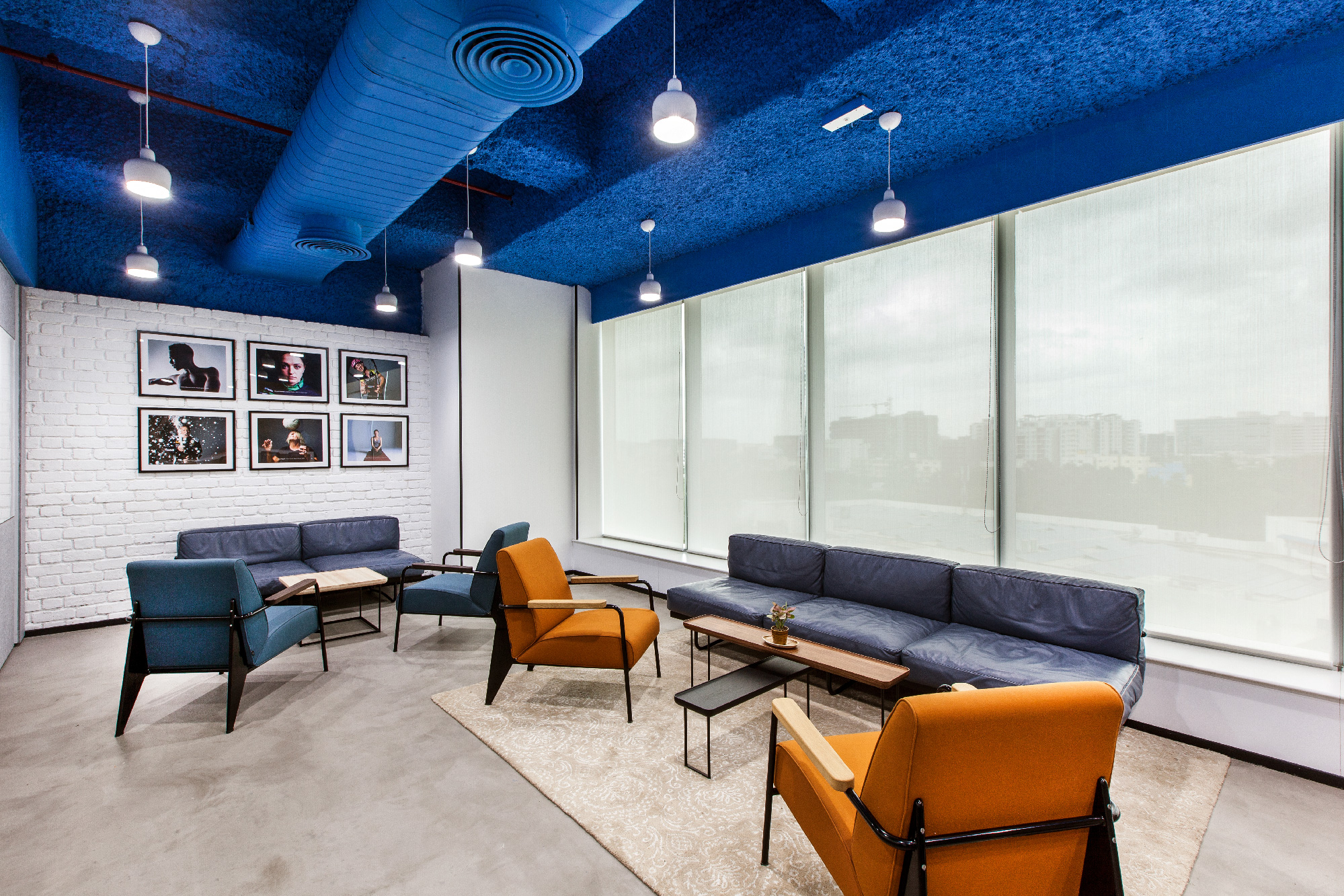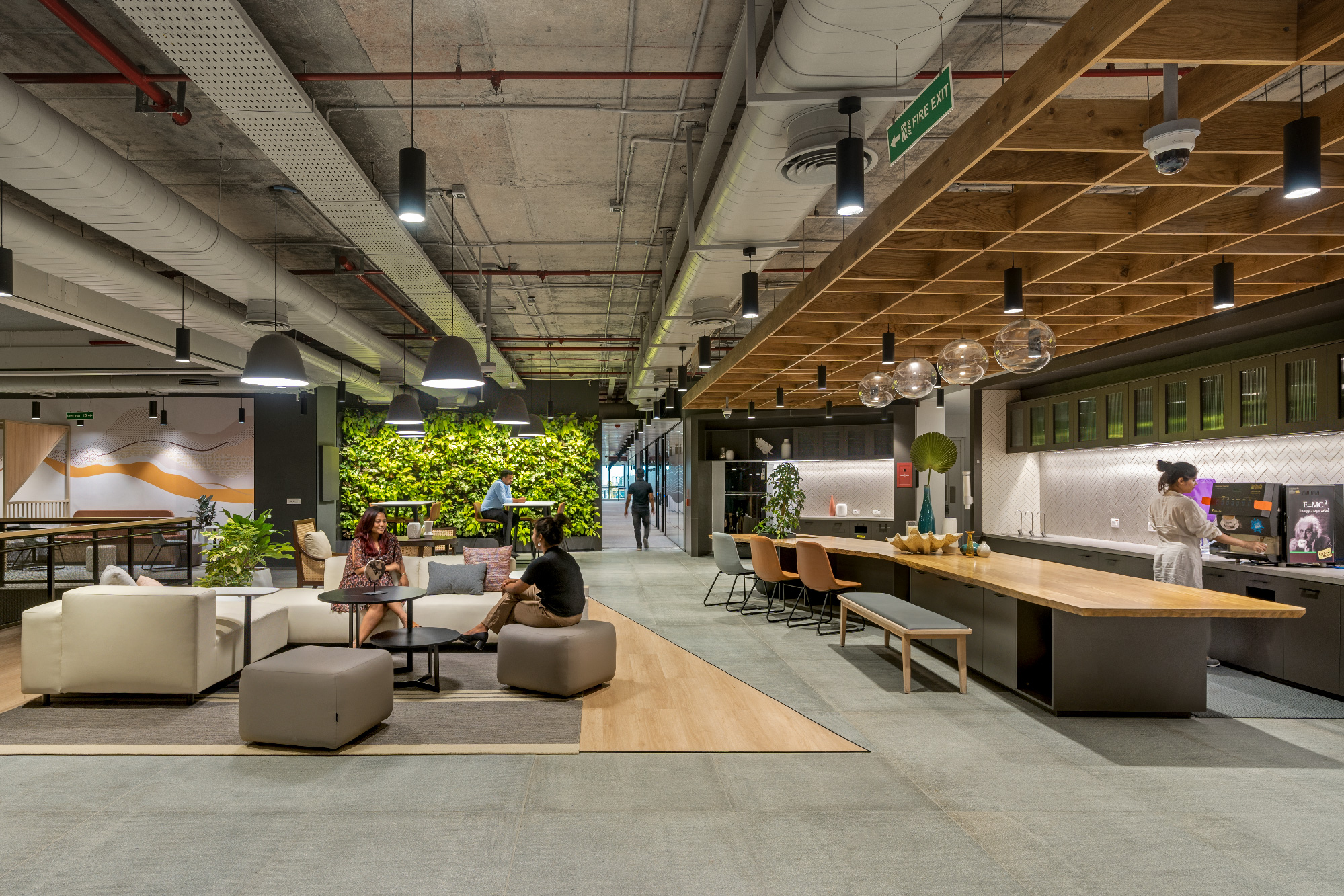
The Power of Design Thinking in the Workplace: Creating People-First Spaces for Sustainable Business Impact
The concept of the workplace has undergone a significant transformation in recent years. Business resilience is undeniably dependent on its people. No matter how robust the strategies or advanced the technology are, it is the employees who form the foundation of an organisation's ability to adapt and thrive. In today's ever-changing landscape, the purpose of the workplace has undergone a significant shift, and employees' needs have taken centre stage, with flexibility emerging as a top priority.
According to a study by McKinsey, a staggering 40% of individuals cited flexibility as the primary reason for accepting their current job. Employees are three times more likely to view their organisation positively if there is alignment on how they want to collaborate, and they are 2.3 times more likely to feel productive if the physical workplace enables their productivity. Consequently, how we work and, therefore, how we design our workspaces have experienced a tectonic shift, with an unwavering focus on people. The answer to addressing the changing needs? Design Thinking in Workplace Design.
Understanding Design Thinking in the Workplace
Design Thinking is a problem-solving methodology that places the human experience at the centre of the design process. It encourages a deep understanding of users’ needs, challenges, and aspirations, leading to the creation of innovative and meaningful solutions. When applied to the workplace, Design Thinking enables organisations to create spaces that resonate with employees on a personal level, sparking creativity, collaboration, and well-being. Design Thinking is often used alternatively with ‘design’ or an approach that is ‘thinking design’. What’s the difference? While thinking design focuses on the solution and its viability and feasibility, Design Thinking is a mindset that is founded on working towards the goal of understanding the user’s needs, requirements, and expectations better to improve or solve it.
Employee-Centric Design: Putting People First
A Design Thinking mindset has a profound impact on every aspect of the workplace. It takes into account the various interconnected elements that shape the overall work experience. The workplace is the ‘operating system’ of any organisation and here’s how designing the workplace from a Design Thinking mindset leads to positive and sustainable business impact:
Employee Traits: Design Thinking begins with understanding your people. By employing empathy and conducting user research, organisations gain insights into their employees' needs, motivations, and aspirations. This knowledge helps create employee-centric solutions, designing a space to address needs that impact and matter the most to them - spaces that enhance their work experience and consequently their work.
Employee Environment: The work environment has the power to significantly impact employee well-being and productivity. Through the lens of Design Thinking, organisations can identify how the work environment can truly unlock the potential of their employees. This could include factors like ergonomic furniture, natural lighting or providing choice and autonomy to work the way they want whether it be quiet spaces for focused work or collaborative areas for teamwork or amenities that foster work-life balance. By applying Design Thinking principles, organisations can create a positive work environment that enhances employee satisfaction and performance.

Well-being and employee satisfaction are crucial for Northern Trust which is further reinforced with its LEED V4 certification. Indoor air quality (IAQ) took top priority in space planning. Strategically placed ventilation systems prevent the accumulation of toxic substances as the space is utilised.
Employee wellness is highly valued, which is why the office interior features height-adjustable components like desks and chairs throughout the premises, promoting comfort and adaptability for individuals.
Additionally, the workplace designs for the office space include various amenities to support employee well-being. These include designated areas such as mothers' rooms, wellness rooms, meditation rooms, and prayer rooms. These spaces provide opportunities for quiet reflection, peace, and overall well-being for Northern Trust’s valued employees.
Employee Behaviour: Design Thinking recognizes that individuals have unique work styles and preferences. By understanding how employees work and what they need to be productive, organisations can design processes, tools, and technologies that align with these behaviours. This might involve implementing flexible work arrangements, providing digital collaboration platforms, or adopting agile project management methodologies that accommodate different work styles and empower employees to do their best work.

To design a workspace that fostered collaboration and innovation for LinkedIn in Bangalore, Space Matrix came up with Employee Design Experience(EDX) - A programme idea that originated from LinkedIn employees as employees wanted to get involved in their own workspace design. The programme gave the workforce an opportunity to add their personal touches to the office interior in line with the ‘people first’ ideology of Design thinking.
When translated into the physical realm, the concept of "Collaboration" manifested in the form of feature walls adorned with 25,000 mounted pencils, vividly vibrant yellow pixelated art, and abundant green spaces that made a significant impact.
Perceptions: The application of Design Thinking extends beyond tangible aspects to intangible elements like culture and brand. Designing the organisational culture involves aligning values, fostering a supportive atmosphere, and promoting collaboration and innovation. By employing Design Thinking principles to shape the brand experience, organisations can create positive perceptions among employees, leading to higher engagement, loyalty, and overall satisfaction.

LinkedIn’s work culture and Brand values are reflected in various elements in the office. And this includes the whole office itself. Inspired by the transparency of a reflective glasshouse, the design of this space serves as a tangible representation of the brand values of "Open, Honest, and Constructive.
Client Perception: Design Thinking also influences the perception of clients or customers towards a brand. By employing empathy and user-centred design, organisations can understand their client's needs, pain points, and expectations. This insight allows for the creation of exceptional customer experiences, personalised interactions, and innovative products or services that elevate the brand and foster long-term relationships.
Space Utilisation and Configuration: Applying Design Thinking to rebalancing space allocation within the workplace is key to business success Traditionally, workspaces have been designed primarily for individual work (me spaces), but Design Thinking brings a people’s perspective to planning. By reevaluating space utilisation and configuration through the lens of Design Thinking, organisations can create a physical environment that is best for their employees - with most employees seeking flexibility design thinking brings to the forefront their perspective on ‘working the way they want’ - leading to a rebalancing of ‘me’ and ‘we’ spaces.

For Legato’s Bangalore office, Space Matrix experts employed a design thinking strategy that prioritises flexibility and agility while embedding them into the company culture. The result is a cohesive ecosystem that caters to the requirements of every user, leaving no detail overlooked. Upon entering the office, visitors are greeted by a hospitality-focused entry zone, setting a positive tone and creating a welcoming atmosphere. This area is designed to make a lasting impression and convey the company's commitment to creating an exceptional employee experience.
One of the key features of the office is a large work cafe, providing a versatile space for employees to collaborate, socialise, and recharge. The work cafe is designed to be dynamic and adaptable, accommodating different work styles and preferences. It serves as a central hub where employees can gather, exchange ideas, and build relationships, fostering a sense of community and connection.
To cater to various meeting needs, the office offers a variety of meeting rooms. These rooms are thoughtfully designed to support different types of interactions, whether it's formal presentations, brainstorming sessions, or informal discussions. By providing a range of meeting spaces, the office encourages collaboration and enables teams to work effectively.
In addition to traditional work areas, the office embraces open office space, promoting transparency, accessibility, and teamwork. This open layout encourages communication and collaboration across teams, breaking down silos and fostering a culture of innovation and knowledge sharing. Moreover, the office incorporates flexible collaboration zones throughout, allowing employees to choose the environment that best suits their current tasks or preference. These choice-driven spaces empower employees to work in a way that optimises their productivity and well-being.
Reflecting Organisational Culture and Values
The workplace serves as a reflection of an organisation's culture, values, and vision. Design Thinking allows organisations to intentionally shape their physical spaces to embody and reinforce their core principles. By aligning the design with the company's mission and values, organisations create an environment that fosters a sense of belonging and shared purpose. This alignment cultivates a strong organisational culture and enhances employee engagement, ultimately driving sustainable business impact.
Design Thinking has emerged as a critical approach for creating people-first workplaces that deliver positive and sustainable business impact. By applying Design Thinking principles to workplace design, organisations can optimise employee well-being, foster collaboration and innovation, and align the workplace with the company's culture and values. Through an employee-centric design process, organisations gain a deeper understanding of their employees' needs, preferences, and work patterns, leading to workplace designs that truly support their well-being and productivity. With the help of our experts, your office space too can become an environment that puts its employees first. Contact us today to know more!
